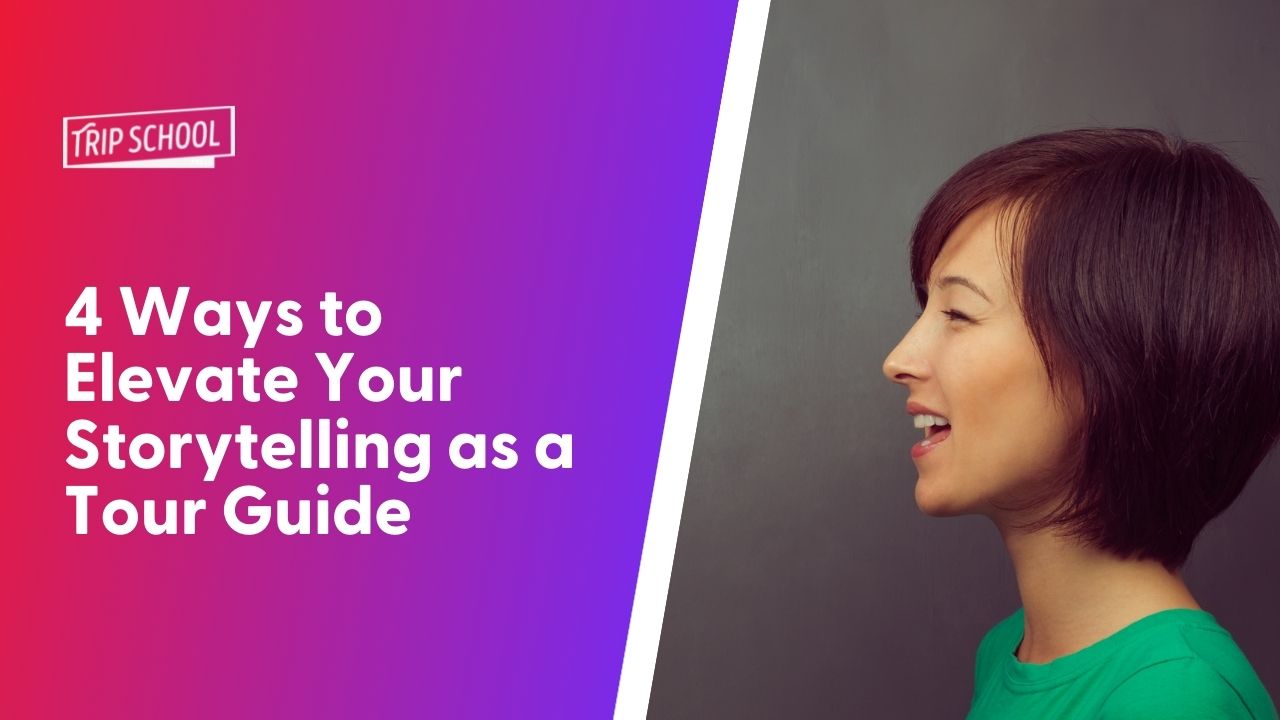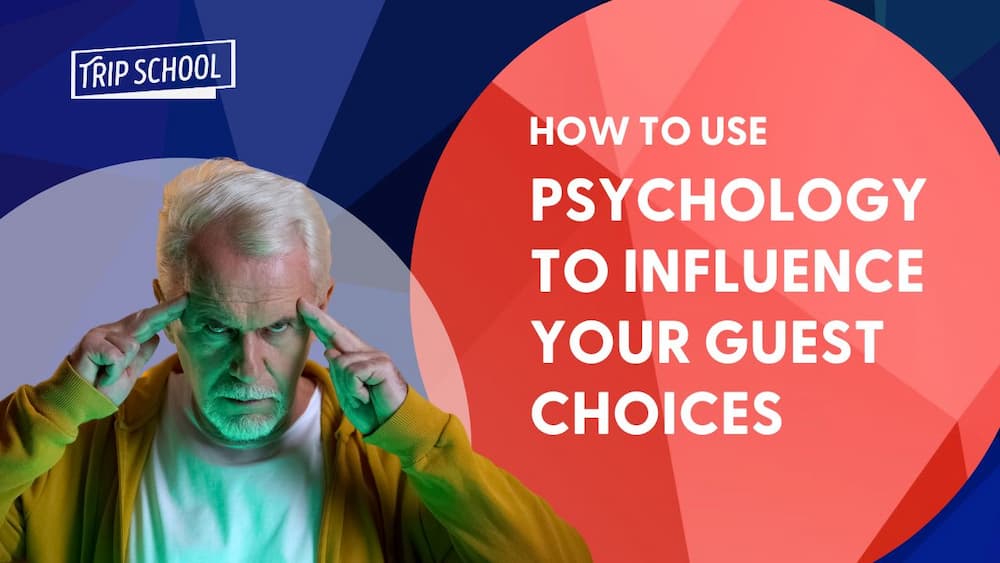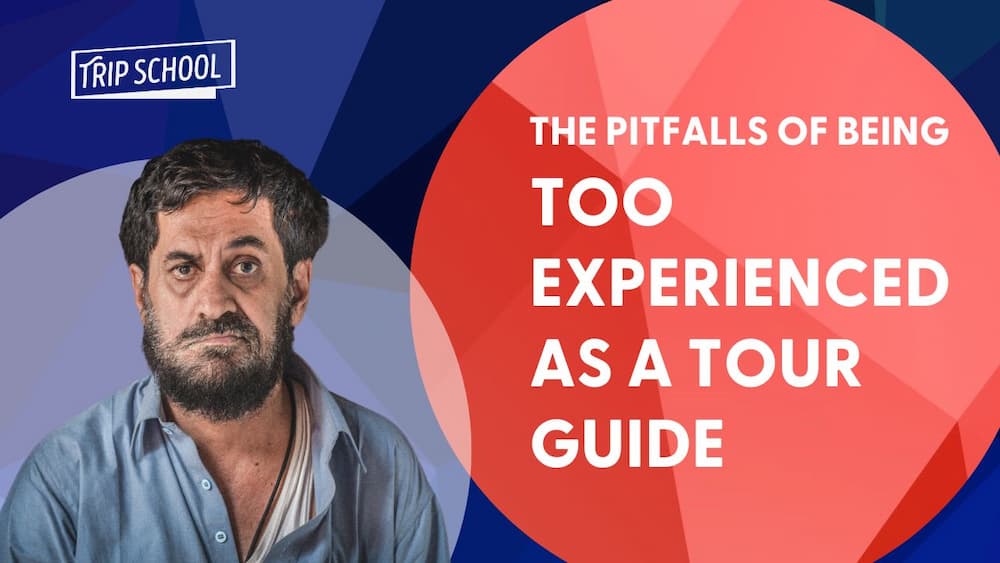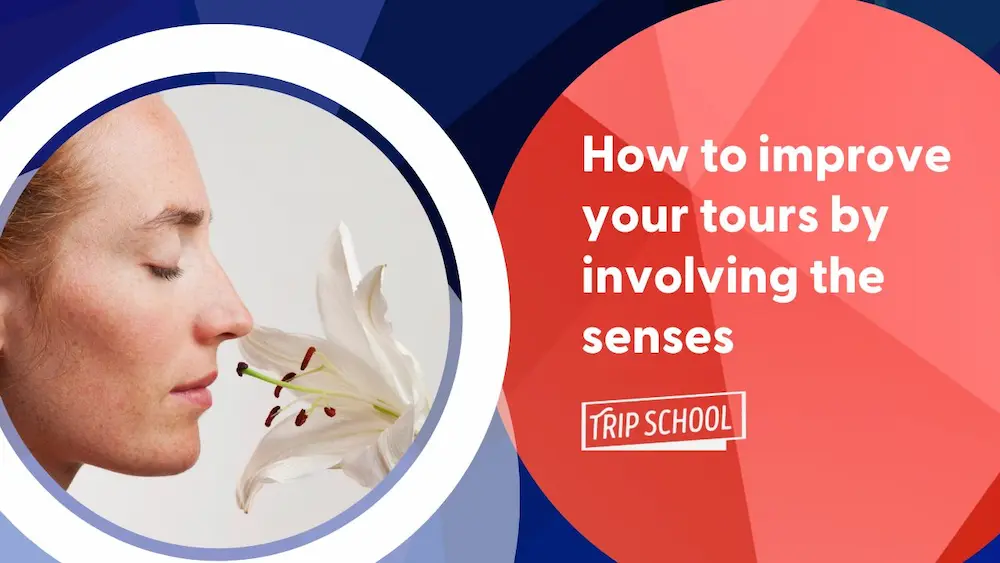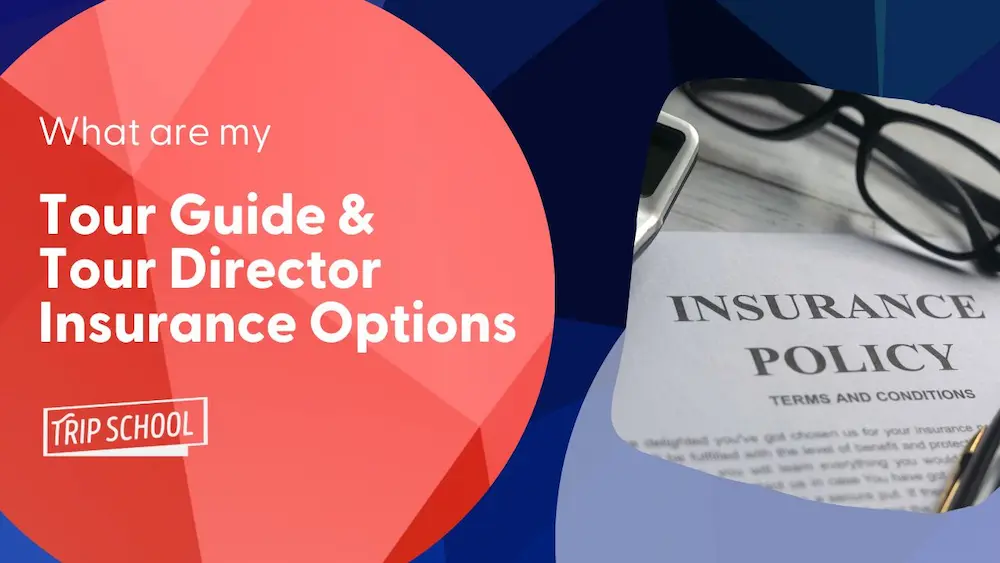4 Ways to Elevate Your Storytelling as a Tour Guide
One of the most popular online classes we taught during the pandemic was our interactive storytelling workshops, where guides from around the world would come together to learn new techniques and improve their material, in a supportive environment. It was interesting to observe a wide variety of styles, and see how each individual personality can inflect a story so differently.
As an instructor I learned a lot of lessons watching guides work over their materials, and over the years I’ve come to see some common pitfalls time and again. Below are simply four key tips (of many more!) that can help propel your tour guide storytelling to new levels.
1 – Connect through emotion, not just information
Emotion is what makes us most human. We feel compassion, thirst, sadness, yearning, joy, and that makes us feel alive. So why, on a tour, would we reduce our communication style as guides to simply information delivery? Of course we have to share facts, and a lot of them, but sometimes guides get caught up in knowing too much. I know I did; I remember years ago watching my reviews turn worse the more I tried to cram my immense knowledge into the tour. So I took a step back,
Consider two ways to start a story about the Statue of Liberty and Ellis Island, in New York City. One might be the classic dry information delivery:
The Statue of Liberty was a gift from France to the United States, and completed in 1886. It is 305 feet tall.
I’ve heard this information repeated, even on the official audio commentary on the Statue ferry!
I propose, instead, that what we do as guides is make a place come alive by painting pictures and sharing stories that give a real sense of place to our guests. Try this introduction instead:
Most of the immigrants leaving their homes in Europe knew they’d never see home again. They’d saved up their whole lives to pay for a boat ride to an unknown world. After weeks on endless ocean, they might hear sea gulls reminding them land is near. And there it was: a green and gold statue, larger than anything they’d ever seen, saying Welcome. Welcome to your new home. Everyone would race to the top deck and lean the boat towards the statue as everyone tried to catch a glimpse. But they also knew what was coming next… the dreaded inspection.
2 – Hook your audience at the beginning
Notice in that first example, that I injected that emotional sense of wonder and joy but also anxiety at the very beginning of my commentary. Before I deliver dates and facts about the statue’s construction, fundraising, engineering, etc. I’m trying to hook you in, so you’ll want to listen, because you feel connected to what’s happening next. If you haven’t hooked your audience at the beginning, then it’s going to be hard to regain them later in the story.
So craft an introduction that engages your audience, and makes them want to hear more. Here are just some of the many ways of hooking your audience:
- Ask a question that relates to your audience’s knowledge: what kinds of park space do you have in your hometown?
- Ask a curiosity question: did you ever wonder why a pineapple is called a pineapple?
- Paint a picture (like my Statue example above)
- Introduce a person
- Make a provocative or counterintuitive statement: Welcome to a statue that no one knew how to build, and neither country could afford.
- Use your visual field. Look around this incredible cemetery… what do you notice?
- A surprising or inspiring fact
- A quote / line of poetry that enlarges up the guests’ view of the place
In each of these cases, you haven’t given away the “meat” of the story, but you’ve welcomed guests in with something that catches their attention.
3 – Find a theme
Themes are a way to make sure everything you say “sticks” together. It answers the question: what’s the point of what I’m saying? The grandfather of themes is a man named Sam Ham, who basically invented a whole field known as thematic interpretation. The idea is simple in theory, and harder to put into practice. A theme makes sure that what you’re saying isn’t just a disconnected series of facts, but drives at something deeper, more meaningful. Communication that makes a difference.
Why bother? Well, a theme implies that we’re doing something as guides that’s deeper than just infotainment. And when there’s a deeper, connected meaning behind everything you’re sharing, then your guests will connect and remember your words better.
Start by answering this simple question:
At this sight, I think it’s really important that my audience understands that ______
And then go from there. Make sure that as you develop material, it’s driving towards that goal.
Does every stop and every story need a theme? No. Sometimes we spit out a few fun anecdotes, and that’s ok. But there should be moments on your tour where you’re going deeper, and crafting a fuller message. You’ll notice how satisfied you feel as you deliver this richer material, too!
4 – Avoid the “point and shoot” mentality
This final point reiterates all the first ones. What I’ve been trying to get at is the idea that we as guides are doing something really powerful in the world. We’re in these fascinating locations, sharing incredibly rich history and knowledge, with people whose eyes are being opened by every new building.
So, my final advice is: don’t squander this opportunity with “point and shoot” guiding. I’ve watched hundreds if not thousands of guides around the world, and I’ll say that the #1 mistake I often see is a guide who simply points to a building, or a statue, or whatever it is, and simply says “This is X.” Often that statement is followed by It was constructed in 1842, by X architect. My point in these four tips is simply to reflect and ask yourself: is this what my guests want to hear, right away? Am I bringing them in to a story that connects them more deeply to where we are?
Storytelling is hard. It’s a craft, and a daily practice. I think my favorite storytellers are standup comedians. Because when their stories work, they feel effortless, engaging, and make their audience feel along with them. They can’t reveal everything in one punch at the beginning, or it wouldn’t make for a good joke. The comedian leads you on, plays with your expectation, and delivers a zinger at the the conclusion. But — and this is my point — behind this effortless delivery has been often months or years of working the material over, changing the structure, adding a word in here or there. It takes time to make these stories work, but it’s worth it, because you’ll notice how much more rewarding your guiding career is.
That’s it for now; there’s a lot more to say on this topic (in fact, we teach a month-long course on this)!
